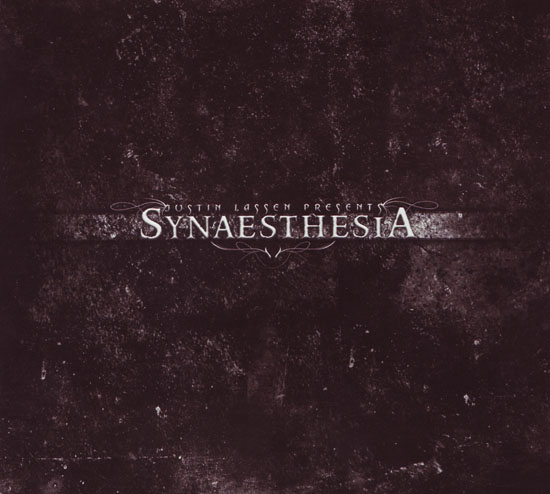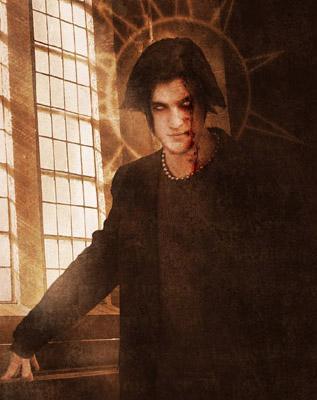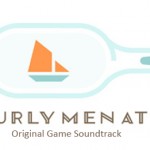One of my favorite pop-rock bands out there is Mae. Their name exists as an acronym, “Multisensory Aesthetic Experience.” They wanted the art and the music of their albums to combine and be something special together. Hence, the prevalence of “music videos” in our generation. For most of us, this is a lovely blending of sensory experiences. But the two things (visual and aural stimuli) aren’t inherently linked.
I knew a girl in college (Belmont University, Nashville Tennessee) who told me she had a condition called synaesthesia. She was even having tests run on her by researchers at Vanderbilt University, just down street from Belmont. She explained to me another way to break down that word: “synthesis of aesthetics.” Aesthetic isn’t just visual or aural. It refers to our five senses that all humans naturally carry: sight, sound, smell, taste, and touch. For this young lady, there were certain colors and flavors associated with the twelve tones on a scale. They essentially followed a rainbow pattern, though I distinctly recall Bb being a “chocolate brown” and B a “silver” for her. As fate would have it, she was also a virtuoso when it came to piano performance.
Some people, through nature or nurture, seem to develop links in the brain that are not common to the majority of the population. These links are the basis for the “synaesthesia” condition. They are involuntary connections that one experiences innately. Some of us, and we music reviewers are especially guilty of this, will use metaphorical language to connect sensory experience. But that’s not synaesthesia, that’s just clever use of language. These synaesthetics actually have definite, consistent experiences that tie one sensory stimulus to another.
Justin Lassen’s two-disc, five-years-in-the-making collection of music are, he claims, the result of composing music as a synaesthetic, with visuals being contributed by many members of various online communities to feed the compositional process.
Lassen has been featured before on the site for his work on a horror film and, more recently, a soundtrack for the game mod Out Of Hell. Now we take a look at his brain child, his personal project that’s taken him around the world more than once to create: Justin Lassen’s own Synaesthesia.
For reference, and to get a feel for how Lassen names his macabre music, the tracklist is below. I think it speaks volumes about the music collection in and of itself.
Disc I
01 Hajieelkhe (Renewed)
02 The Nightmare Factory
03 Cathedral of Gears
04 Fallen Angel (Lament)
05 The Holy Library
06 Where Fears Roam (A Movement)
07 Something Was Left Behind
08 Fairy and Monster
09 Gone (Interlude)
10 The Virus’ Memory (Suite)
11 The Castle Screams Again
12 The Deep Aliens
13 Mysterious Lady (Sketch)
14 Ascending the Mines
15 Dreadfully Subtle
16 The Falsehood Upward
17 The Build and the Fall
18 What, If In a World, There Was
19 Lucifer’s Harmonium
Disc II
01 The Intensity
02 Welcome Back, We Missed You
03 Though It Seems, It Is Not All In Vain
04 And You Thought I Was Dark
05 Samurai Templar
06 Brightly the Night (Though, Darkly)
07 Hidden Hive
08 That Pounding In the Back of Your Head
09 My New Desired Location Awaits
10 Tall Unrelenting Numbness
11 Green City Scape
12 Learning To Fly
13 Belfast Halloween (Prelude)
14 Finishing Last (Cue)
15 Stillness (3rd Movement)
16 Almost There, Just Not
17 The Medusa Fields
18 Body of Laws
19 Getting Ready For War
Generally, this body of music contains the usual Justin Lassen style of electronic drones and ambient samples he collected manually and mixed into his music. But, unlike many of his other works, Lassen also got hold of orchestral groups, particularly string sections, to perform entirely tonal, classical pieces written by Lassen. These sections of music are, at times, used to blend with the effects and computerized production techniques Lassen is known for — a good example is “Stillness (3rd Movement).” At other times, such as in “Mysterious Lady,” the chamber music stands in stark contrast against the rest of the album and is entirely acoustic. This is a welcome reprieve from some of the harsher pieces found earlier on disc one, and “Mysterious Lady” also stands as one of the longest pieces on the collection (over 6 minutes in length, compared to the usual 2 to 3 minute pieces!).
But, whether acoustic/tonal or electronic/ambient, this two disc collection is never boring. Functionally, it’s great study music, and I mean that in two senses. One, it’s good background music for studying (if you’re still participating in higher education, you might really enjoy this set of music!). Second, it’s a great artifact to study in and of itself. To study this music is to learn more about Lassen’s condition. It won’t magically bestow upon you the symptoms of synaesthesia, but the choices Lassen makes in the timing, the melody, the fluidity or sharpness of dynamic contrast, are all seemingly predetermined by the dark images Lassen studied before putting pen to paper (or finger to keyboard) to write the music.
I had expected this music collection to be much like the shiver-inducing fright-fests of Lassen’s past. And don’t get me wrong, you’ll find plenty of that here (if you have the music, “The Falsehood Upward” is one great example). But it’s not all like that. There’s some truly beautiful, even light and airy, music to be found if you search the 38 tracks thoroughly enough. For someone as “dark” (and content to be so) as Lassen, I found this to be a pleasant surprise.
Lassen also got his hands into some Asian-specific ethnic strings. Tracks like “The Build and the Fall” or “Samurai Templar” made use of some string, wind, and percussion instruments whose origins are in East Asia. I was happy that Lassen’s focus on acoustic instruments in this collection didn’t limit him to the Western orchestral tradition.
Most of the individual pieces are properly fleshed-out: they develop, they build, they fade, they are a self-contained piece. But not all of them. Some tracks are just short “ideas” that break most traditions of songwriting. These are some of my favorite tracks. “Almost There, Just Not” randomly cuts itself short with some short electronic blips after what seemed to be a wonderfully-developing piece. I couldn’t help but laugh when I heard it.
My final observation from this album has to do with Lassen himself. A question kept running through my mind. I’m not sure why, but it did. The question was, “does Lassen have what it takes to go big?” You know what I mean by that: have his name associated with some best-selling film or game. I think he does. He has the industry connections at this point, and he clearly has the talent. But does he want it? I’m not so sure. A project like Synaesthesia is highly self-indulgent. It’s the art he wanted to make. To make it big, you have to sell yourself. You have to become a “music factory” of sorts. You have to compose what your commissioner wants to hear, and revise perfectly good music to fit whatever expectations are put upon you. For an “independent” man like Lassen, I’m not sure this is the way to go. Perhaps I am as happy as he is that he is instead churning out projects like Synaesthesia or the Out Of Hell soundtrack. It’s something strange, something that cannot ever be “mainstream,” and that’s just the point of it, at least for the listener. I don’t think Lassen makes music like this just to be different. But this is his craft, and it’s his favorite way of being musical. So, more power to him.
The Synaesthesia two disc set is available for $40 via Nihil Records.
Tags: Justin Lassen, multisensory experience, Music Reviews, Nihil Records, Reviews, Synaesthesia









































[…] Original Sound Version » Blog Archive » A Blending of the Senses: Justin Lassen’s Synaesthesia (… http://www.originalsoundversion.com/?p=6474 – view page – cached One of my favorite pop-rock bands out there is Mae. Their name exists as an acronym, “Multisensory Aesthetic Experience.” They wanted the art and the music of their albums to combine and be something special together. Hence, the prevalence of “music videos” in our generation. For most of us, this is a lovely blending of sensory experiences. But the two things (visual and aural stimuli)… Read moreOne of my favorite pop-rock bands out there is Mae. Their name exists as an acronym, “Multisensory Aesthetic Experience.” They wanted the art and the music of their albums to combine and be something special together. Hence, the prevalence of “music videos” in our generation. For most of us, this is a lovely blending of sensory experiences. But the two things (visual and aural stimuli) aren’t inherently linked. View page […]